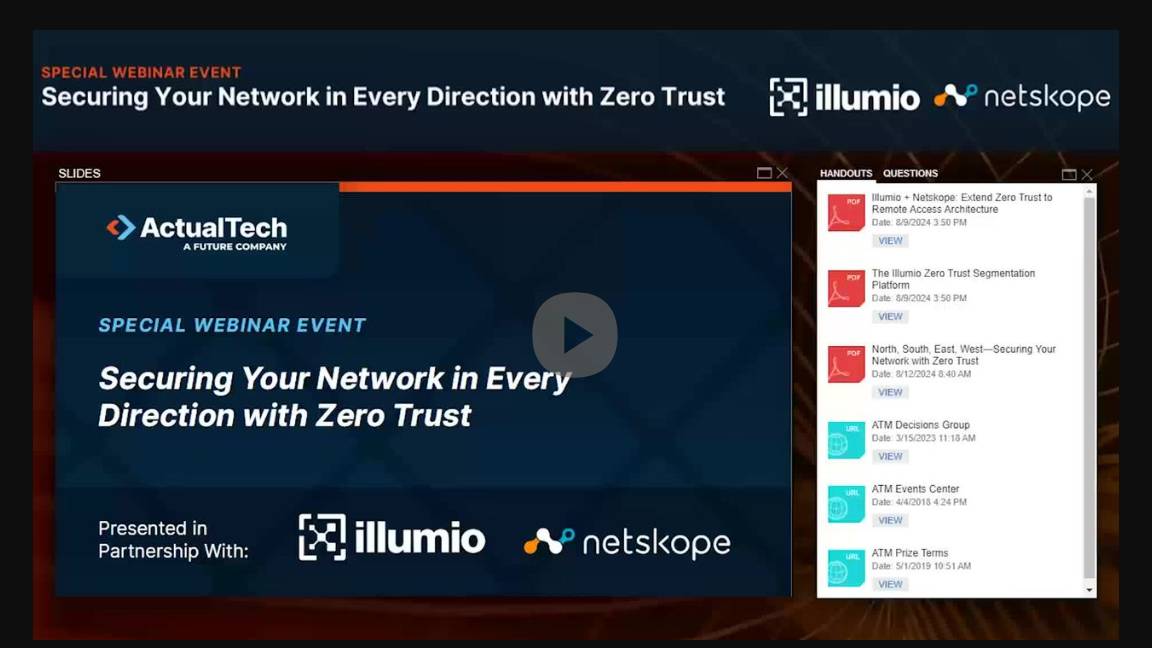Thousands of webcams vulnerable to attack
Exposed connections could lead to loss of privacy or information theft


More than 15,000 webcams in homes and offices can be accessed by members of the public and manipulated over just an internet connection.
Many security and conferencing cameras can be accessed remotely by anyone if users implement no additional security measures post-installation, according to findings by Avishai Efrat, a white hat hacker with Wizcase. In other cases, these cameras are set with predictable passwords or default user credentials.
Webcams susceptible to this include AXIS net cameras, the Cisco Linkys webcam (now owned by Belkin), and WebCamXP 5 software, among many others in countries all across the world.
Many may assume that only devices like routers can be exposed in this way, given they serve as gateways that connect other devices with each other. Webcams, however, can also be accessed remotely in a similar way via peer-to-peer (P2P) networking or port forwarding. It's through these mechanisms that Internet of Things (IoT) devices, too, can be hacked.
"Is it possible that the devices are intentionally broadcasting? We can only determine this for on certain webcams that we're able to access the admin panel for," said Wizcase's web security expert Chase Williams.
"They're not necessarily broadcasting, but some may be open in order to function properly with apps and GUIs (interfaces) for the users, for example.
"Also included with some measure of frequency are specifically designated security cameras at places of business, both open and closed to the public which begs the question, just how much privacy can we realistically expect, even inside an allegedly secure building."
Sign up today and you will receive a free copy of our Future Focus 2025 report - the leading guidance on AI, cybersecurity and other IT challenges as per 700+ senior executives
While it's difficult to know who owns such devices from technical information alone, cyber criminals may be able to ascertain such details using context from videos. Potential attackers can also glean user information and estimate the geolocation of the device in cases where they have admin access.
With the information made available by the unsecure webcams, Wizcase suggests cyber criminals can change settings and admin credentials, obtain bank and payment information, or even give hostile government agencies a glimpse into people's private lives.
The vulnerabilities can be explained by the fact that manufacturers aim to make the installation process as seamless and user-friendly as possible. This, however, can sometimes result in open ports and no authentication mechanism being set-up.
In addition, many devices aren't put behind firewalls or virtual private networks (VPNs), which could otherwise offer a measure of protection.
"Standalone cams are notorious for not being secured properly," said Malwarebytes' lead malware intelligence analyst Chris Boyd.
"If you have a cheap IoT device in your home watching over your sleeping toddler, or a few handy cams serving as convenient CCTV when you head off to the shops, take heed. It may be that the price for accessing said device on your mobile or tablet is a total lack of security.
"Always read the manual and see what type of security the device is shipping with. It may well be that it has passwords and lockdown features galore, but they're all switched off by default. If the brand is obscure, you'll still almost certainly find someone, somewhere has already asked for help about it online."
Wizcase has suggested that whitelisting specific IP and Mac address to access the camera should filter those with authorised access, and prevent attackers from being able to infiltrate a user's network.
Adding password authentication, and configuring a home VPN network, too, can mean remotely connecting to the webcam is only possible within the VPN. UPnP should also be disabled if people are using P2P connections.

Keumars Afifi-Sabet is a writer and editor that specialises in public sector, cyber security, and cloud computing. He first joined ITPro as a staff writer in April 2018 and eventually became its Features Editor. Although a regular contributor to other tech sites in the past, these days you will find Keumars on LiveScience, where he runs its Technology section.
-
 Researchers claim Salt Typhoon masterminds learned their trade at Cisco Network Academy
Researchers claim Salt Typhoon masterminds learned their trade at Cisco Network AcademyNews The Salt Typhoon hacker group has targeted telecoms operators and US National Guard networks in recent years
-
 HPE says unified channel strategy won't force Juniper partners to generalize
HPE says unified channel strategy won't force Juniper partners to generalizeNews Does the company embrace specialists or want a full portfolio push? The answer, it seems, is both
-
 Cisco ASA customers urged to take immediate action as NCSC, CISA issue critical vulnerability warnings
Cisco ASA customers urged to take immediate action as NCSC, CISA issue critical vulnerability warningsNews Cisco customers are urged to upgrade and secure systems immediately
-
 Cyber teams are struggling to keep up with a torrent of security alerts
Cyber teams are struggling to keep up with a torrent of security alertsNews Fragmented identity security processes are creating blind spots, and the proliferation of tools doesn't help
-
 Edge devices are now your weakest link: VPNs, firewalls, and routers were the leading source of initial compromise in 30% of incidents last year – here’s why
Edge devices are now your weakest link: VPNs, firewalls, and routers were the leading source of initial compromise in 30% of incidents last year – here’s whyNews Compromised network edge devices have rapidly emerged as one of the biggest attack points for small and medium businesses.
-
 Billions of IoT devices will need to be secured in the next four years – zero trust could be the key to success
Billions of IoT devices will need to be secured in the next four years – zero trust could be the key to successNews Researchers have warned more than 28 billion IoT devices will need to be secured by 2028 as attacks on connected devices surge.
-
 Cisco claims new smart switches provide next-level perimeter defense
Cisco claims new smart switches provide next-level perimeter defenseNews Cisco’s ‘security everywhere’ mantra has just taken on new meaning with the launch of a series of smart network switches.
-
 Five Eyes cyber agencies issue guidance on edge device vulnerabilities
Five Eyes cyber agencies issue guidance on edge device vulnerabilitiesNews Cybersecurity agencies including the NCSC and CISA have issued fresh guidance on edge device security.
-
 T-Mobile security chief insists its defenses stood up to attacks linked to Salt Typhoon
T-Mobile security chief insists its defenses stood up to attacks linked to Salt TyphoonNews No T-Mobile customers or services were affected after its security teams detected suspicious activity on their routers
-
 Securing your network in every direction with zero trust
Securing your network in every direction with zero trustWhitepaper Webinar on the evolution of network security